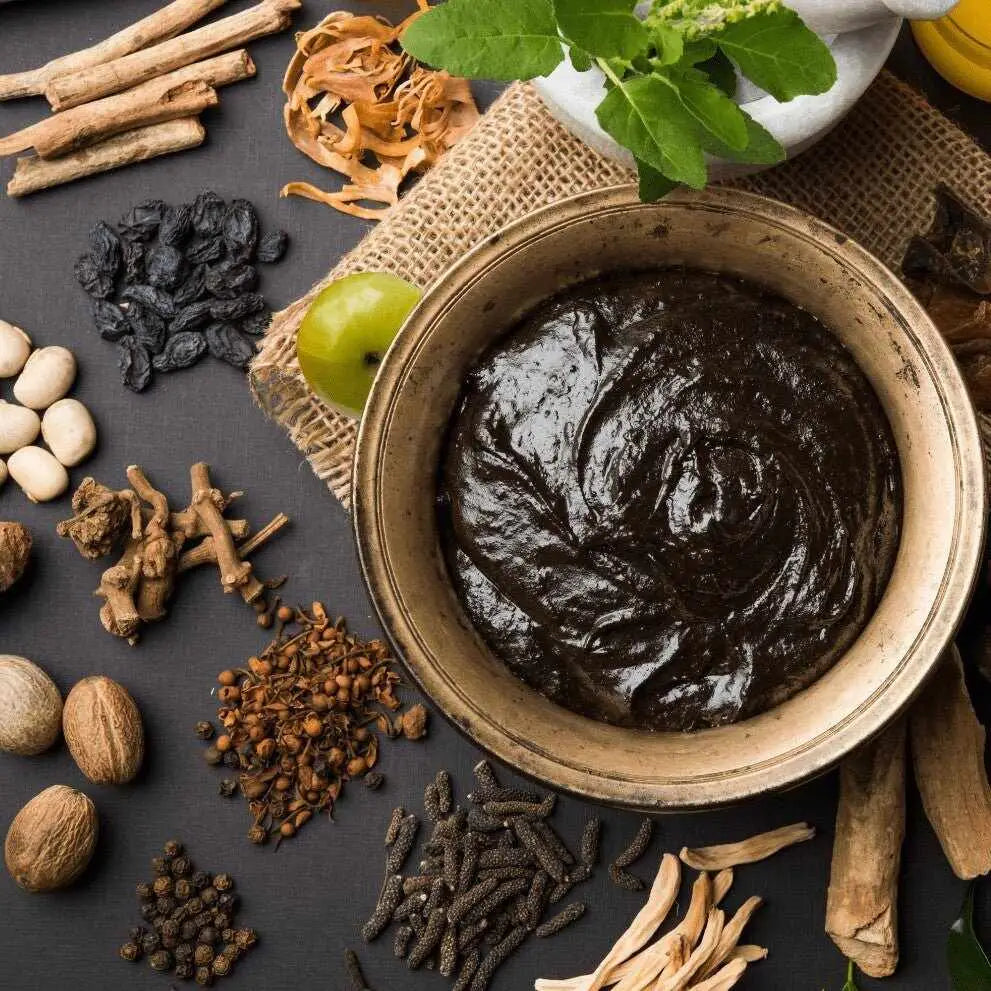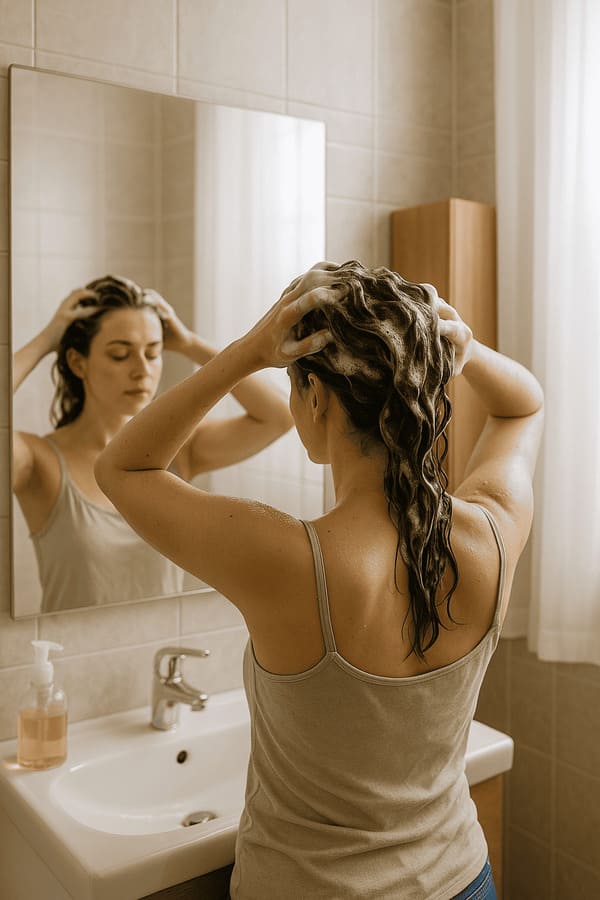Indian Ayurvedic Herbs have exceptional properties! Let's discover this oriental beauty treatment for the bio-cosmetics of face and hair!
Ayurvedic Herbs or Indian Herbs.
Ayurvedic herbs are medicinal herbs that have always been used in traditional Indian medicine: Ayurveda (in Sanskrit: आयुर्वेद).
Ayurveda holds an ancient knowledge that aims at the balance between body and mind.
In Indian tradition, medicinal herbs are used not only as medical remedies but also for cosmetics and beauty of skin and hair, therefore they have both beneficial and medicinal characteristics.
We find them in the form of powders obtained from dried plant parts , such as leaves, roots and even fruits.
Ayurvedic herbs: how to use them?
They are mainly used as hair packs or as face masks, excellent for oily skin.
They should be mixed with warm water or with other liquids such as aloe juice and rose water or even with infusions such as chamomile, hibiscus or others.
Prepare yourself by taking a ceramic bowl and a wooden spoon , no to metal, it can alter its properties.
We recommend that you sift the powders well to avoid lumps.
Start by putting a couple of spoonfuls of powder in the empty bowl and then add more as needed. Now pour in the liquid you have chosen, make sure it is warm - not boiling - because heat releases the properties of the medicinal herbs.
Add a little liquid at a time and mix until you obtain a creamy consistency , not liquid and not too dense.
Now you need a little patience, you will have to leave the mixture to rest for 15 to 30 minutes, except for some herbs that need to hydrate for about 12 hours and you can therefore prepare them the night before and then use them the following day.
Your preparation is now ready to be applied to your face or hair, which must be well cleansed!
But we want to give you some valuable advice!
As a hair pack:
To prevent your hair from drying out you can add honey or yogurt or vegetable gels such as aloe to the preparation to nourish and hydrate, never use oils.
To apply to hair, start from the roots and work your way to the ends.
The exposure time varies from herb to herb and objective. As a guide, if you use cleansing herbs you should leave them on for between 15 and 30 minutes, if it is healing , over 2 hours.
As a face mask:
Leave the herbal mask on, without letting it dry, you can use a spray bottle with warm water. After the necessary time, always rinse with warm water and apply a toner and a cream for your skin type.
Ayurvedic Herbs: The Properties
Each herb has its own properties and characteristics , it is important to know what your cosmetic goal is to be able to use them at their best.
The main cosmetic functions:
- They volumize and make hair shiny.
- They reduce dandruff from the scalp.
- They reduce hair loss.
- They help hair growth.
- They dye hair and skin.
- They cleanse and purify skin and hair.
- They regulate the sebum of the skin and scalp.
- They soothe and reduce itching of the skin.
- They reduce skin blemishes.
- They tone the skin and therefore help reduce wrinkles.
We now write you a list of the main and most widespread ones with their main use:
ALTEA or ALTHEA (Althea officinalis) also called White Mallow for the color of its flowers, contains a high percentage of mucilage as well as starches, pectins and flavonoids
- Hair: Moisturizing, soothing. Ideal for dry, curly, frizzy hair…
- Skin: soothing and emollient, excellent in case of irritation.
AMLA (Emblica officinalis) is obtained from the fruits of the Indian Gooseberry, rich in Vitamin C, a powerful antioxidant.
- Hair : Strengthens, prevents hair loss, makes hair shiny. Avoid if you have light hair because it tends to darken.
- Skin : antioxidant, brightens the complexion, excellent for oily skin.
ARETHA or REETHA (Sapindus Mukurossi) is obtained from soap nuts, a totally natural product rich in saponins that delicately cleanse even the most sensitive skin.
- Hair : saponin herb, has cleansing properties. It can cause dryness problems, it is advisable to mix it with shikakai to overcome the problem.
BRAHMI (Bacopa monnieri) Ayurvedic powder prepared with crushed leaves and branches of Brahmi, a very popular medicinal plant,
- Hair : combats hair loss, stimulates the growth of new hair, excellent against dandruff.
BHRINGRAJ or MAKA (Eclipta Alba) with the appearance of a weed its name literally means "King of Hair"
- Hair : Similar to brahmi, it combats hair loss and stimulates growth.
- Skin: excellent for dermatitis and psoriasis.
CASSIA (Cassia Obovata or Cassia/Senna italica)
- Hair : also called neutral henna, strengthening, polishing, volumizing. Avoid on bleached hair because you risk greenish reflections (use Sidr)
HAY GREEK or METHI (Trigonella foenum graecum)
Contains estrogen, rich in mucilage.
- Hair : strengthening, fights hair loss, hydrating, volumizing.
- Skin: antioxidant, astringent, ideal for oily and problem skin.
JASWAND or HIBISCUS
Hibiscus is the plant used in the preparation of karkadè, the infusion.
-
Hair: strengthens hair , especially in cases of excessive hair loss, to keep it soft, shiny and easy to comb. If used alone it leaves a very light purple reflection that is almost imperceptible, but if added to other plants such as henna, indigo or madder it adds shades that vary from pink to red, to copper brown
KAPOOR KACHLI (Hedychium spicatum)
- Hair: super scented, conditioning, stimulates growth.
KACHUR SUGANDHI (Kaempferia galanga)
- Hair: Similar to kapoor kachli it is also very fragrant, refreshing and helps in the growth of new hair.
- Skin : purifying, soothing, antioxidant.
- Hair: Reflective that gives intense shades to brown hair. It can be used alone, for amber highlights, or combined with henna or indigo to bring the shade of the dye to more brown tones.
NAGARMOTHA or MOTHA
- Hair: Sebum balancing, prevents graying, polishing, anti-dandruff, stimulates growth. Can darken hair.
- Skin: antioxidant, purifying, soothing, fights skin blemishes.
NEEM (Azadirachta indica)
- Hair: soothing , excellent against dandruff, dermatitis and psoriasis.
- Skin: purifying, astringent, ideal for oily skin and dermatitis.
MADER (Rubia cordifolia)
- Hair: against psoriasis and eczema, if added to henna it makes the color turn towards cherry tones.
- Skin: Lightens skin blemishes, useful against acne and dermatitis.
SHIKAKAI (Acacia concinna)
- Hair : A cleansing and conditioning herb that is effective for all types of scalp problems. Strengthens, stimulates growth, adds shine, and fights dandruff. Excellent when used with Reetha and Amla. Can darken light hair.
- Hair: dyes with highlights ranging from blonde to intense yellow and its action is seen above all in bringing out the natural highlights of blonde hair. Mixed with other dye powders it can be used to create warm shades in browns and reds.
SIDR (Ziziphus spina christi)
Very rich in mucilage.
- Hair : very similar to cassia, it is a strengthener. It does not create problems for bleached hair and there is no risk that it darkens blondes. Cleansing, moisturizing, indicated in cases of dandruff, dermatitis, psoriasis.
- Skin : purifying, astringent, soothing, suitable for acne-prone and eczema-prone skin.
TULSI (Ocimum Santum) also called Holy Basil
- Hair : detoxifying, purifying, anti-dandruff, ideal for oily skin.
- Skin : soothing, purifying, astringent.
The Ayurvedic herb par excellence is henna, which is not only able to dye hair naturally, but is also an excellent restructuring agent. In this article you can find out everything there is to know about henna !
Continue reading in our blog section Henna and vegetable dyes to take care of your hair naturally!
[ApSC sc_key=sc3148331291][/ApSC]


















